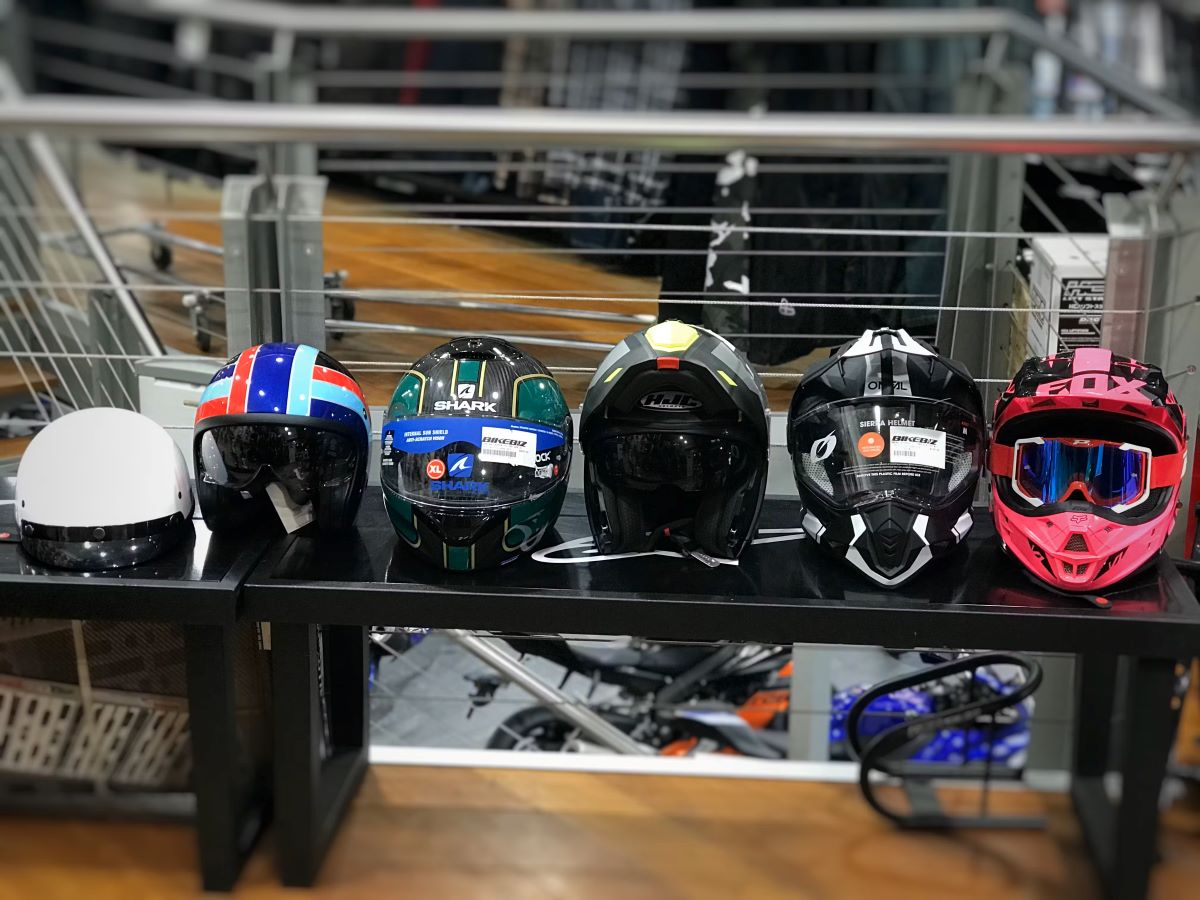

Articles
How To Store Motorcycle Helmet
Modified: December 7, 2023
Learn the best ways to store your motorcycle helmet with these informative articles. Keep your helmet safe and protected when not in use.
(Many of the links in this article redirect to a specific reviewed product. Your purchase of these products through affiliate links helps to generate commission for Storables.com, at no extra cost. Learn more)
Introduction
Properly storing your motorcycle helmet is essential for maintaining its performance and prolonging its lifespan. Whether you use your helmet daily or occasionally, taking the time to store it correctly will ensure that it remains in optimal condition and provides the necessary protection when you need it most.
While it may seem like a simple task, there are various factors you need to consider when storing your helmet. This article will guide you through the importance of proper helmet storage, how to choose the right storage location, cleaning and drying techniques, removing visors and accessories, and different helmet storage options available to you.
By following these tips and best practices, you can protect your investment and ensure that your helmet remains safe and reliable for years to come. So, let’s dive into the world of motorcycle helmet storage!
Key Takeaways:
- Proper helmet storage is crucial for maintaining its integrity, protecting it from damage, and ensuring longevity. Follow guidelines for cleaning, choosing the right location, and removing accessories to keep your helmet in optimal condition.
- Selecting the right storage location, cleaning and drying your helmet properly, and removing visors and accessories are essential steps for maintaining your helmet’s performance and longevity. Invest in suitable storage options to protect your investment and ensure your safety gear remains reliable.
Read more: How To Store Helmet On Motorcycle
Importance of Proper Helmet Storage
Proper helmet storage is crucial for several reasons. First and foremost, it helps maintain the helmet’s structural integrity. Helmets are designed to absorb impact and protect your head in the event of an accident. However, improper storage can compromise the helmet’s protective capabilities, rendering it less effective in preventing injuries.
Another reason to store your helmet correctly is to protect it from external elements. Exposure to sunlight, extreme temperatures, moisture, and dust can degrade the materials and components of the helmet. Over time, this can weaken the helmet’s shell, padding, and straps, making it less safe and comfortable to wear.
Additionally, proper helmet storage helps prevent damage caused by accidental drops, impacts, or crushing. Placing your helmet in a secure location where it won’t be knocked off a shelf or crushed by other objects reduces the risk of structural damage and enhances its overall longevity.
Furthermore, storing your helmet properly allows it to retain its original shape. Helmets are designed to fit comfortably and securely on your head. If they are stored in a way that distorts their shape, they may not fit properly when you wear them again. This can lead to discomfort, reduced visibility, and compromised safety.
Last but not least, storing your helmet correctly helps keep it clean and hygienic. Sweat, dirt, and oil from your hair can accumulate inside the helmet, creating an unpleasant odor and potentially promoting the growth of bacteria and fungi. By storing your helmet in a clean and ventilated environment, you can minimize these issues and ensure a fresh and comfortable wearing experience.
Overall, proper helmet storage is essential for maintaining the helmet’s structural integrity, protecting it from external elements, preventing damage, preserving its shape, and ensuring cleanliness. Now that we understand its importance, let’s explore how to choose the right storage location.
Choosing the Right Storage Location
When it comes to selecting the ideal storage location for your motorcycle helmet, there are a few key factors to consider. Here are some guidelines to help you make the right choice:
- Cool, Dry, and Dark: It’s crucial to choose a storage area that is cool, dry, and away from direct sunlight. Heat and excessive moisture can degrade the materials of the helmet over time, while sunlight can cause fading and deterioration.
- Well-Ventilated: Proper ventilation is important to prevent the buildup of odors and the growth of mold and mildew. Choose a storage location that allows air to circulate freely, keeping your helmet fresh and dry.
- Away from Chemicals: Avoid storing your helmet near any harsh chemicals or solvents. These substances can damage the helmet’s shell and impact its overall performance.
- Secure and Stable: Opt for a storage location that is secure and stable, ensuring that your helmet won’t be easily knocked over or damaged. Avoid placing it in areas where it could fall from a height or get crushed by heavy objects.
- Out of Reach of Pets and Children: Keep your helmet out of reach of pets and children. Curious pets can chew on the helmet’s padding or straps, while children may inadvertently damage it during play.
Based on these guidelines, some suitable storage locations for your helmet could include a dedicated helmet shelf, a closet shelf, or a designated area in your garage or storage room. Just remember to ensure these places fulfill the criteria mentioned above.
Now that you have a better understanding of how to choose the right storage location, let’s move on to the next essential step: cleaning and drying your helmet properly.
Cleaning and Drying the Helmet
Regularly cleaning and drying your motorcycle helmet is crucial for maintaining its condition and extending its lifespan. Here are some steps you should follow:
- Remove Removable Parts: Start by removing any removable parts, such as the visor, chin curtain, or cheek pads. Refer to your helmet’s user manual for specific instructions on how to detach these components.
- Hand-Washing: Fill a basin or sink with lukewarm water and a mild soap or helmet-specific cleaner. Gently wash the helmet’s interior and exterior using a soft cloth or sponge. Avoid scrubbing too vigorously as it may damage the helmet’s finish.
- Rinse Thoroughly: After washing, rinse the helmet thoroughly with clean water to remove any soap residue. Ensure that no soap or cleaner is left behind, as it can cause irritation or deterioration over time.
- Drying Properly: Allow your helmet to air dry naturally in a well-ventilated area. Avoid using direct heat sources, such as hairdryers or heaters, as they can damage the helmet’s materials. Make sure the helmet is completely dry before storing it to prevent the growth of bacteria or mold.
- Cleaning the Visor: Clean the visor separately using a mild glass cleaner or a visor-specific cleaner. Gently wipe the visor with a soft cloth to remove any dirt or smudges. Avoid using abrasive materials or harsh chemicals as they can scratch or damage the visor’s surface.
- Reassembling: Once the helmet and visor are completely dry, reassemble all the removable parts according to the manufacturer’s instructions. Ensure that each component is securely in place.
Regular cleaning and drying not only keep your helmet hygienic but also help maintain its functionality and comfort. By following these steps, you can ensure that your helmet is always in its best condition, ready for your next ride.
Now that your helmet is clean and dry, you may need to remove any additional accessories or visors before storing it. Let’s explore this step in the next section.
Removing Visors and Accessories
Before storing your motorcycle helmet, it is recommended to remove any additional visors or accessories, such as tinted visors, sun shields, or Bluetooth communication devices. Here’s how to remove them safely:
- Visor Removal: Most helmets have a mechanism or release button that allows you to easily remove the visor. Refer to your helmet’s user manual or contact the manufacturer for specific instructions on how to detach the visor. Carefully follow the provided steps to avoid damaging the visor or the helmet’s attachment points.
- Accessory Removal: If you have any extra accessories attached to your helmet, such as sun shields or communication devices, remove them according to the manufacturer’s instructions. Some accessories may require unscrewing or unclipping, while others may have a simple release mechanism.
- Store Visors Separately: Once the visor and accessories are removed, it’s essential to store them separately to prevent any scratching or damage. Place them in a soft cloth bag or a protective case designed for visor storage. Make sure to keep them in a safe place where they won’t be accidentally dropped or mishandled.
Removing visors and accessories not only protects them from potential damage during storage but also makes it easier to clean and store the helmet itself. Now that you know how to detach these additional components, let’s explore different helmet storage options you can consider.
Read more: How To Store A Motorcycle
Helmet Storage Options
When it comes to storing your motorcycle helmet, there are several options available to suit your needs and preferences. Here are some popular helmet storage options:
- Helmet Bags and Cases: Helmet bags and cases are a convenient storage solution, especially if you frequently transport your helmet. These bags are designed to protect the helmet from scratches, dust, and humidity, while also providing an easy and secure way to carry it. Look for options with padded interiors and ventilation features for added protection and breathability.
- Wall-Mounted Helmet Display: For those who want to showcase their helmets, wall-mounted helmet displays can be a stylish and practical choice. These displays allow you to hang your helmet on a wall, providing easy access and creating an eye-catching display in your home or garage. Just ensure that the mounting system is secure and doesn’t put too much pressure on the helmet.
- Helmet Shelves and Racks: Helmet shelves and racks are a great option if you have multiple helmets or want to keep them organized. These storage solutions typically include individual compartments or hooks to securely hold each helmet, making them easily accessible and protected. Look for shelves or racks made from sturdy materials that can withstand the weight of the helmets.
- Hanging Hooks: If you have limited space and want a simple and cost-effective storage solution, hanging hooks can be a practical option. Install hooks in a secure area and hang the helmets by their chin straps. Ensure that the hooks are strong enough to support the weight of the helmets and won’t damage them.
Consider your available space, the number of helmets you have, and your personal preferences when choosing a storage option. Remember that the chosen storage method should provide protection, accessibility, and proper ventilation for your helmet.
Now that you are familiar with different helmet storage options, let’s move on to some essential tips to ensure proper helmet storage and maintenance.
When storing a motorcycle helmet, make sure to clean the interior and exterior with a mild soap and water. Then, store it in a cool, dry place away from direct sunlight and extreme temperatures to prevent damage to the materials and inner lining.
Helmet Bags and Cases
Helmet bags and cases are a popular choice for storing and transporting motorcycle helmets. These storage options provide protection against scratches, dust, and humidity, ensuring that your helmet remains in excellent condition. Here’s what you need to know about helmet bags and cases:
1. Material and Padding: Consider the material and padding used in the bag or case. Look for options made from durable and water-resistant materials to shield your helmet from external elements. The interior should have soft padding to provide cushioning and prevent any potential damage during transportation or storage.
2. Ventilation: Opt for bags or cases with ventilation features to allow air circulation. Proper ventilation helps prevent the buildup of moisture and unpleasant odors inside the bag or case. It also helps to prevent the growth of mold and mildew, keeping your helmet fresh and clean.
3. Size and Fit: Ensure that the bag or case is the right size and shape for your specific helmet model. It should fit snugly without any excess space that could allow the helmet to move around. A well-fitting bag or case offers better protection against impacts and ensures that the helmet stays in its proper shape.
4. Storage and Transportation: Helmet bags and cases are designed for both storage and transportation purposes. They often come with handles or straps for easy carrying. Some options even include additional compartments to store visors or other accessories safely. Make sure the bag or case has secure closure mechanisms, such as zippers or buckles, to protect your helmet during transportation.
5. Maintenance and Cleaning: Regularly clean and inspect your helmet bags or cases to keep them in good condition. Follow the manufacturer’s instructions for cleaning, and make sure they are completely dry before storing your helmet. If the bag or case becomes damaged or worn out, consider replacing it to ensure optimal protection for your helmet.
Helmet bags and cases offer a convenient and reliable storage solution, providing protection and peace of mind for your valuable motorcycle helmet. Whether you’re traveling or simply keeping your helmet stored at home, investing in a high-quality bag or case is a worthwhile decision.
Now that you’ve learned about helmet bags and cases, continue reading to discover more helmet storage options and tips for proper maintenance.
Wall-Mounted Helmet Display
A wall-mounted helmet display offers a unique and visually appealing way to showcase your motorcycle helmet while keeping it easily accessible. This storage option allows you to transform your helmet into a decorative piece, adding a touch of personal style to your home or garage. Here’s what you need to know about wall-mounted helmet displays:
1. Secure Mounting: Choose a sturdy and secure mounting system to hang your helmet on the wall. Consider using wall hooks, hangers, or specialized helmet display mounts. It’s essential to ensure that the mounting system can support the weight of the helmet and keep it firmly in place.
2. Location and Visibility: Select a prominent location on your wall for displaying the helmet. It could be in your living room, garage, or any area that allows for easy visibility. This allows you to showcase your helmet and share your passion for motorcycles with others.
3. Aesthetics and Design: Consider the overall design and aesthetics of your helmet display. Choose a display mount that complements the helmet’s design and enhances its visual appeal. Some options feature sleek and minimalist designs, while others incorporate decorative elements or custom artwork.
4. Protection and Maintenance: While a wall-mounted display adds a stylish touch, it’s essential to ensure that your helmet remains protected. Avoid hanging the helmet in direct sunlight or near sources of heat to prevent damage. Regularly inspect the helmet for any signs of wear or damage, and clean it as needed to maintain its appearance.
5. Additional Accessories: Depending on the design of your helmet display, you may have the option to include additional accessories, such as hooks for hanging goggles or gloves. This adds functionality and allows you to keep all your motorcycle gear in one organized place.
Wall-mounted helmet displays not only provide a visually appealing storage solution but also offer a conversation starter and a way to showcase your love for motorcycles. However, it’s important to ensure that your helmet remains secure, protected, and well-maintained even when displayed on the wall.
Now that you’ve explored the wall-mounted helmet display option, let’s continue to discover other helmet storage ideas and essential tips for proper maintenance.
Helmet Shelves and Racks
Helmet shelves and racks are practical and efficient storage options for motorcycle helmets. They provide a dedicated space to store your helmets, keeping them organized and easily accessible. Here’s what you need to know about helmet shelves and racks:
1. Organization: Helmet shelves and racks help you keep your helmets organized in one central location. Depending on the design, they may feature individual compartments or hooks to hold each helmet securely. This prevents helmets from getting misplaced or damaged.
2. Space-Saving: Helmet shelves and racks are designed to maximize space utilization. They can be installed on walls, placed on countertops, or even mounted on the inside of closet doors. This makes them suitable for various locations, whether in your garage, hallway, or bedroom.
3. Accessibility: With helmet shelves and racks, your helmets are easily accessible whenever you need them. You can quickly grab the helmet you want without having to search through cluttered shelves or cabinets. This is especially beneficial for riders who use multiple helmets for different riding conditions.
4. Protection: Helmet shelves and racks are designed to protect your helmets from accidental falls or impacts. The compartments or hooks hold the helmet securely in place, reducing the risk of it being knocked over or damaged. This helps maintain the helmet’s shape and integrity.
5. Display Option: Depending on the design of the helmet shelf or rack, you can use it as a display feature. Showcase your helmets proudly, creating a visually appealing focal point in your garage or living space. This allows you to highlight your collection or share your passion for motorcycles with others.
6. Additional Storage: Some helmet shelves and racks come with additional storage options, such as compartments for gloves, goggles, or other motorcycle accessories. This provides a convenient and organized solution for storing all your riding gear in one place.
Helmet shelves and racks are versatile storage options that offer organization, accessibility, and protection for your motorcycle helmets. They help keep your helmets in top condition and simplify your day-to-day routine when preparing for a ride.
Now that you’ve learned about helmet shelves and racks, continue reading to discover some essential tips for proper helmet storage and maintenance.
Read more: How To Store A Motorcycle Outside
Helmet Storage Tips
Proper helmet storage is essential for keeping your motorcycle helmet in optimal condition. Here are some important tips to help you ensure the longevity and performance of your helmet:
- Clean before storing: Always clean your helmet before storing it. Remove any dirt, bugs, or debris from the exterior and interior using a mild soap or helmet-specific cleaner. Make sure it is completely dry to prevent any moisture-related issues while in storage.
- Store in a cool, dry place: Choose a storage location that is cool, dry, and away from direct sunlight. Extreme heat and humidity can degrade the helmet’s materials, compromising its safety and longevity. Avoid storing your helmet in areas such as the trunk of your car or a damp basement.
- Avoid stacking helmets: Never stack helmets on top of each other as it can lead to pressure points and distortion. Each helmet should have its dedicated storage space, whether it’s on a shelf, rack, or in an individual bag or case.
- Avoid hanging by straps: While it may be tempting to hang your helmet by its chin straps, it is not recommended. Hanging the helmet by the straps can cause them to stretch, weaken, or become misshapen over time. Instead, opt for storage solutions that support the helmet from underneath, such as shelves or racks.
- Inspect for damage: Regularly inspect your helmet for any signs of damage, such as cracks, dents, or loose padding. If you notice any issues, it’s important to address them promptly. Damaged helmets may compromise your safety and should not be used.
- Avoid contact with chemicals: Keep your helmet away from any harsh chemicals or solvents. Exposure to these substances can cause damage to the helmet’s shell, visor, or other components. Store your helmet in a location where it won’t come into contact with these harmful substances.
- Protect from pets and children: Ensure that your helmet is stored out of reach of pets and children. Curious pets may chew on the helmet’s padding or straps, while children may unintentionally damage it during play. Keep it in a secure location to avoid any accidents or incidents.
- Follow manufacturer’s guidelines: Always refer to the manufacturer’s instructions for specific storage recommendations and maintenance guidelines. They will provide you with the most accurate and up-to-date information to properly care for your helmet and avoid any potential issues.
By following these helmet storage tips, you can maintain the performance, integrity, and longevity of your motorcycle helmet. Remember, proper storage and care ensure that your helmet is always ready to provide you with the necessary protection during your rides.
Now that you have a comprehensive understanding of helmet storage, it’s time to put these tips into practice and enjoy the benefits of a well-maintained helmet.
Conclusion
Properly storing your motorcycle helmet is crucial for maintaining its performance, protecting it from damage, and ensuring its longevity. By following the guidelines and tips outlined in this article, you can ensure that your helmet remains in optimal condition, ready to provide you with the necessary protection on your rides.
We explored the importance of proper helmet storage, emphasizing the need to maintain the helmet’s structural integrity, protect it from external elements, and preserve its shape and cleanliness. Choosing the right storage location, cleaning and drying the helmet correctly, and removing visors and accessories were all discussed in detail.
Furthermore, we explored various helmet storage options, such as helmet bags and cases, wall-mounted displays, and helmet shelves and racks. Each option comes with its own benefits and considerations, allowing you to choose the solution that best fits your needs and preferences.
Lastly, we provided essential tips for proper helmet storage, emphasizing the importance of keeping the helmet clean, storing it in a suitable environment, and inspecting it regularly for any signs of damage. Following these tips will help prolong the lifespan of your helmet and ensure its optimal performance when you need it most.
Remember to always refer to the manufacturer’s guidelines to ensure that you’re following their specific instructions for your helmet model. Each helmet may have unique storage requirements, and it’s essential to adhere to their recommendations.
By investing time and effort into proper helmet storage, you can extend the life of your helmet, maintain its protective capabilities, and enjoy peace of mind knowing that you’re taking care of your safety gear. So, don’t neglect the importance of proper helmet storage—your head and your helmet will thank you.
Frequently Asked Questions about How To Store Motorcycle Helmet
Was this page helpful?
At Storables.com, we guarantee accurate and reliable information. Our content, validated by Expert Board Contributors, is crafted following stringent Editorial Policies. We're committed to providing you with well-researched, expert-backed insights for all your informational needs.
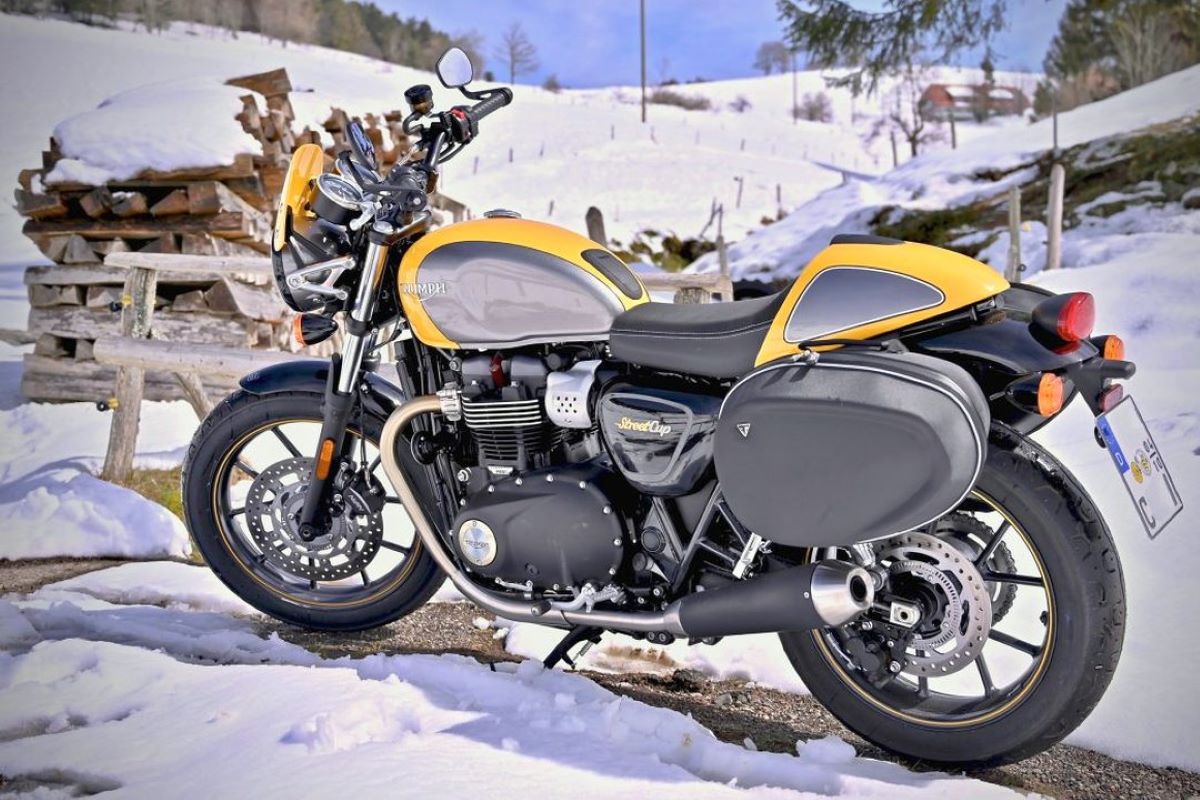
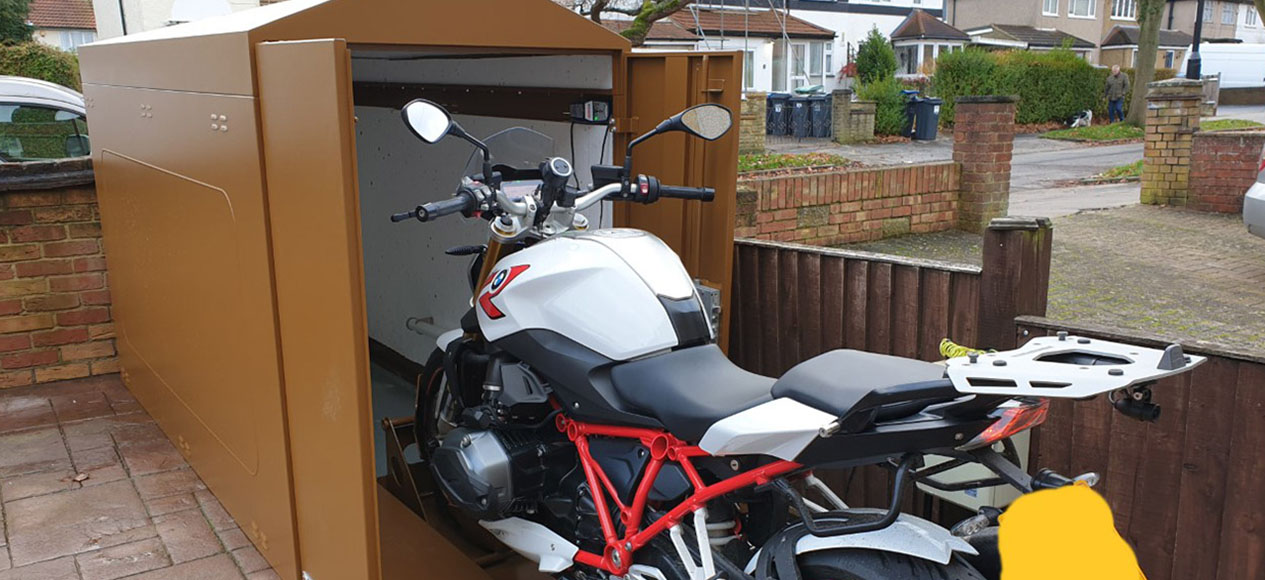

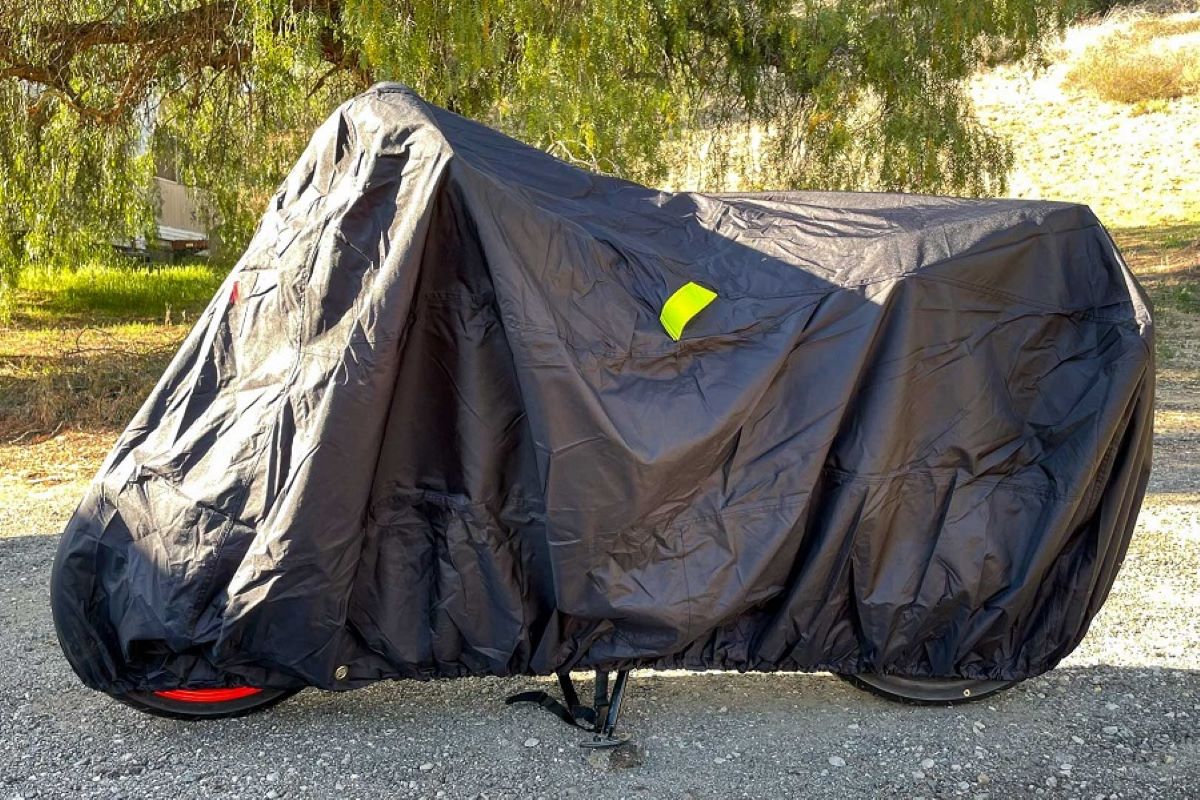
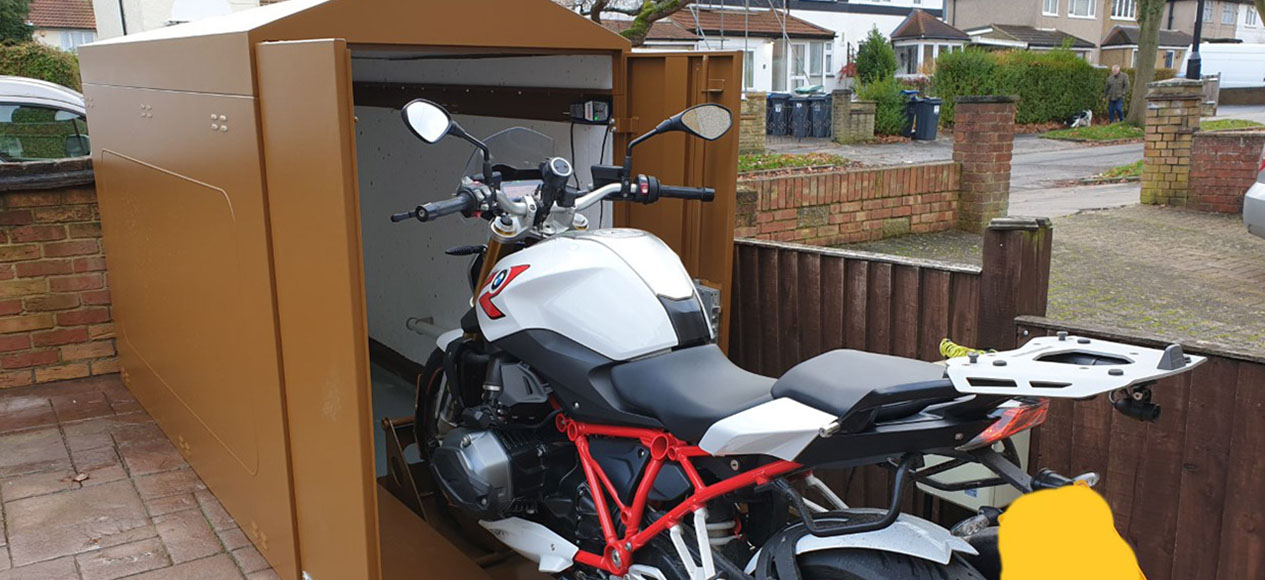

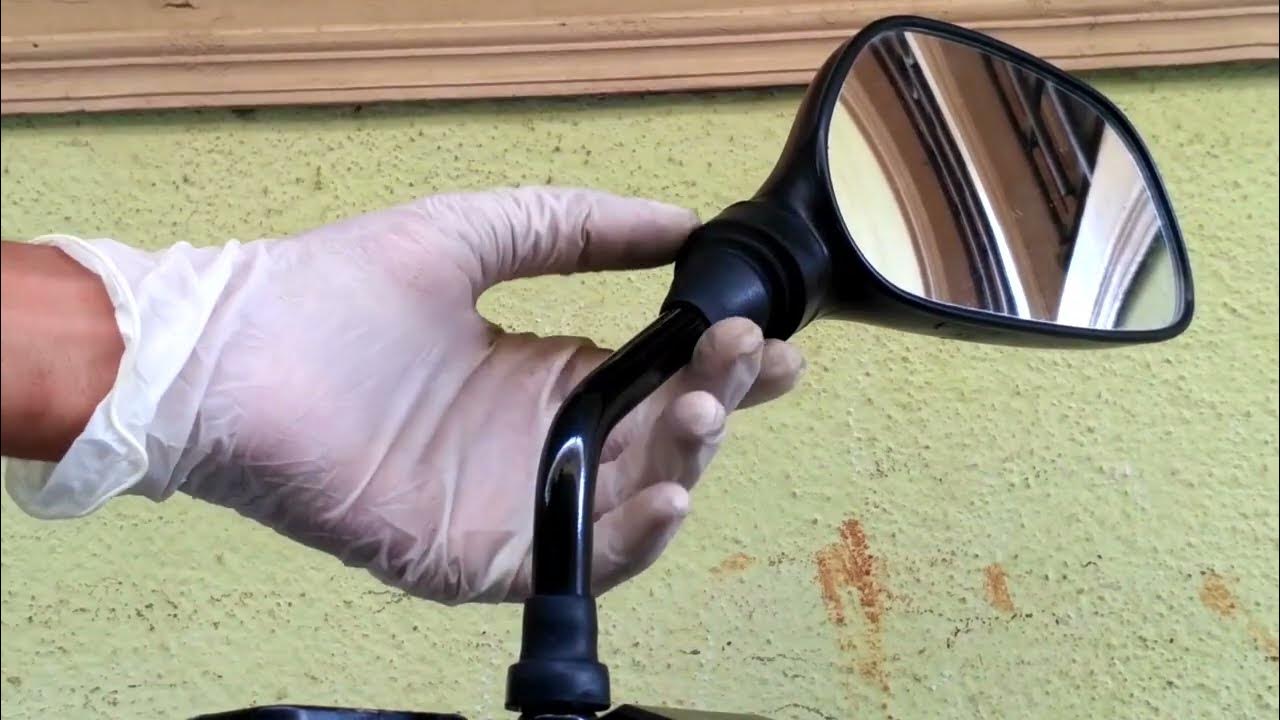

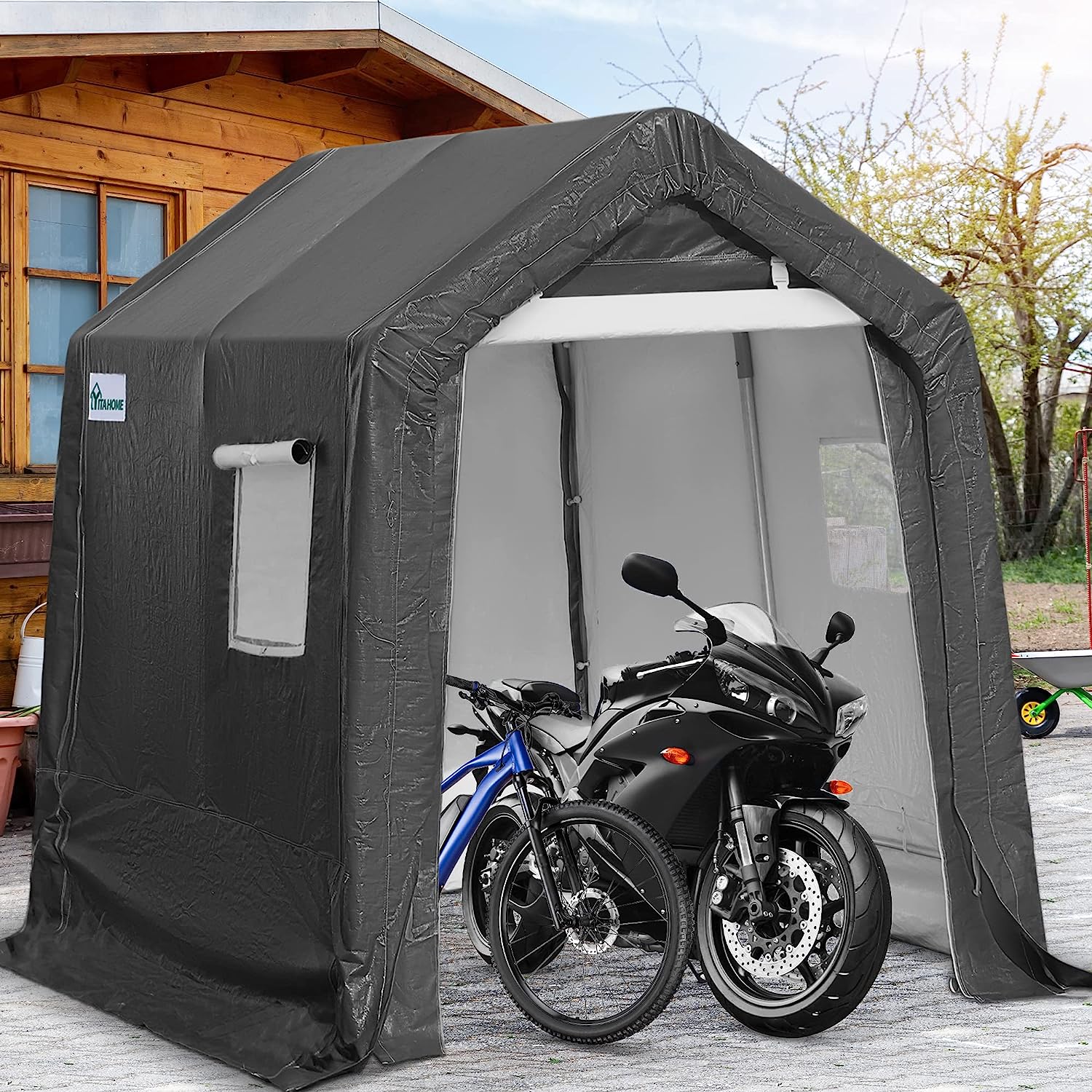

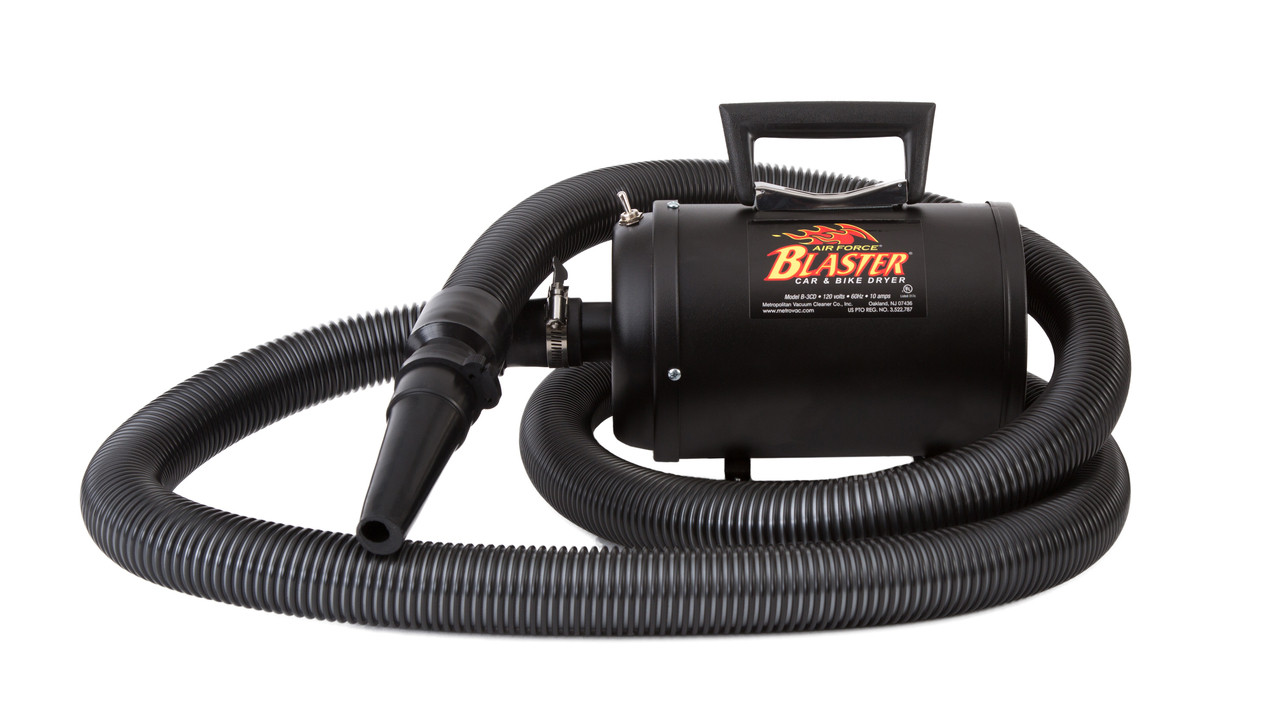

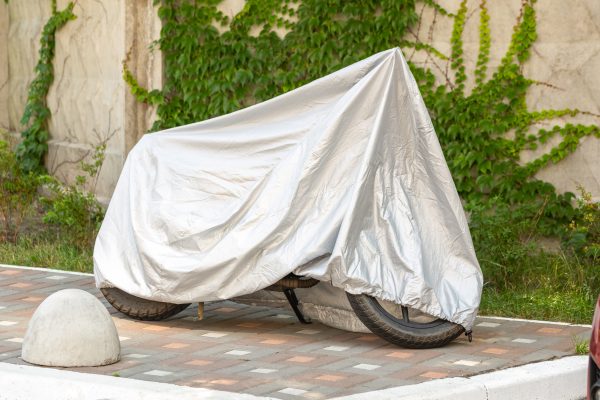

0 thoughts on “How To Store Motorcycle Helmet”